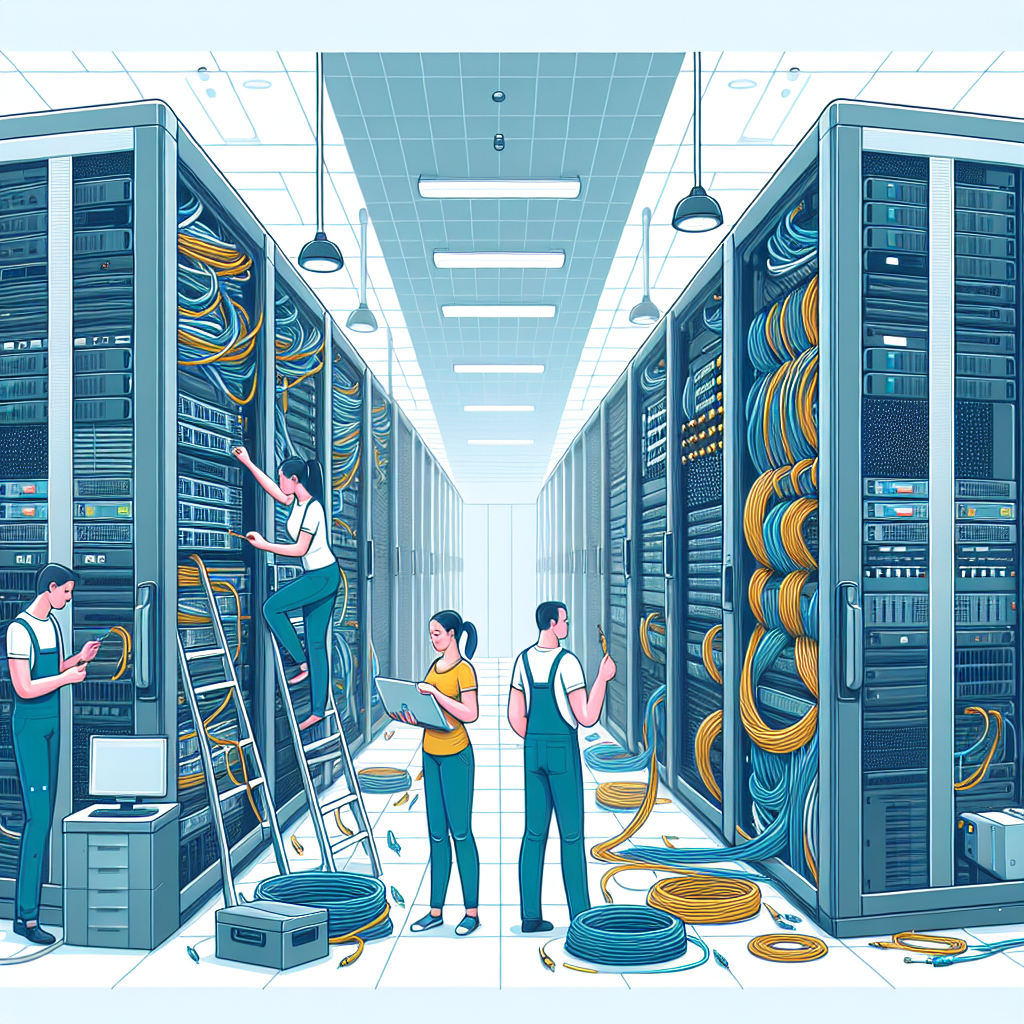Data centers are the backbone of today’s digital world, housing and managing the vast amounts of data that power our everyday lives. With the growing demand for faster and more reliable connectivity, data center cabling has become increasingly important. However, there are common mistakes that can hinder the efficiency and performance of data center cabling. Here are some common data center cabling mistakes to avoid:
1. Lack of planning: One of the biggest mistakes in data center cabling is failing to plan ahead. Before installing any cabling, it is crucial to have a clear understanding of the layout of the data center, the equipment that will be connected, and the future growth of the facility. Without proper planning, data center cabling can become a tangled mess, leading to inefficiencies and potential downtime.
2. Poor cable management: Proper cable management is essential for maintaining a clean and organized data center. It is important to label cables, use cable trays and racks, and maintain proper cable lengths to avoid clutter and confusion. Failure to implement good cable management practices can result in cable damage, signal interference, and difficulty troubleshooting issues.
3. Using incorrect cabling standards: Data center cabling must adhere to industry standards to ensure compatibility and performance. Using the wrong type of cabling, connectors, or termination methods can lead to data transmission errors, signal degradation, and network downtime. It is important to consult with a professional cabling installer to ensure that the correct standards are followed.
4. Overloading cables: Overloading cables with too many connections can lead to signal degradation and performance issues. It is crucial to properly distribute connections across multiple cables to prevent overloading and ensure optimal performance. Using cable management tools such as patch panels and cable organizers can help distribute connections evenly and prevent overloading.
5. Ignoring cable length requirements: Data center cabling has strict requirements for cable lengths to ensure proper signal transmission and efficiency. Using cables that are too long or too short can lead to signal loss, data errors, and network issues. It is important to follow manufacturer guidelines and industry standards for cable length requirements to maintain optimal performance.
In conclusion, avoiding these common data center cabling mistakes is essential for maintaining a reliable and efficient data center infrastructure. By planning ahead, implementing proper cable management practices, following industry standards, distributing connections evenly, and adhering to cable length requirements, data center operators can ensure that their cabling infrastructure is optimized for performance and scalability. Consulting with a professional cabling installer can help avoid these common mistakes and ensure a well-designed and efficient data center cabling system.


Leave a Reply